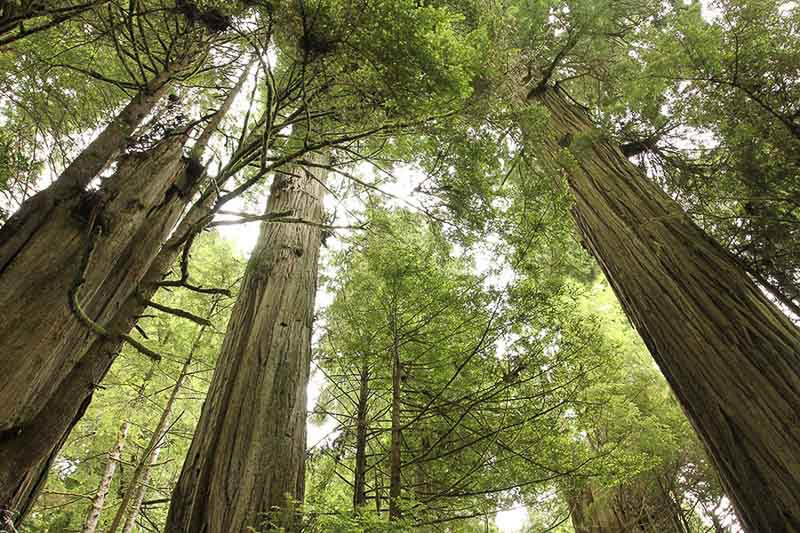Sequoiadendron (Giant Sequoia)
Sequoiadendron, commonly known as the Giant Sequoia or Big Tree, is a monotypic genus, meaning it contains only one species, Sequoiadendron giganteum. Native to the western slopes of the Sierra Nevada Mountains in California, these trees are some of the largest and oldest living organisms on Earth.
Habit: Sequoiadendron exhibits a straight, columnar growth habit, often with a massive, buttressed trunk and a broad, conical crown. Mature trees typically reach heights of 150-280 feet (45-84 meters), but can grow even taller. The bark is thick, fibrous, and deeply furrowed, providing protection from fire.
The “flowers” are actually cones, as this tree is a conifer. Male cones are small and release pollen in late winter, while female cones are larger, round, and woody, maturing in autumn with seeds that are dispersed by wind and gravity.
Hardiness: Sequoiadendron is hardy in USDA zones 7-9. Despite its native habitat in humid mountain forests, it can adapt to a variety of climates and soils.
Uses: In landscaping, Sequoiadendron is often used as a specimen tree in parks and large gardens. Due to its size, it’s not suitable for small gardens or urban environments.
While Sequoiadendron trees are moderately drought-tolerant once established, they prefer regular moisture for optimal growth.
Key facts about Sequoiadendron include its impressive lifespan, with some individuals living over 3,000 years, and its status as one of the world’s largest trees by volume. The General Sherman Tree, a Giant Sequoia located in Sequoia National Park, is the largest known single-stem tree on Earth. Despite their size and age, Sequoiadendrons have relatively shallow root systems, spreading out wide to provide stability. Their remarkable size, longevity, and resilience make Sequoiadendron a truly majestic presence in the natural world.

